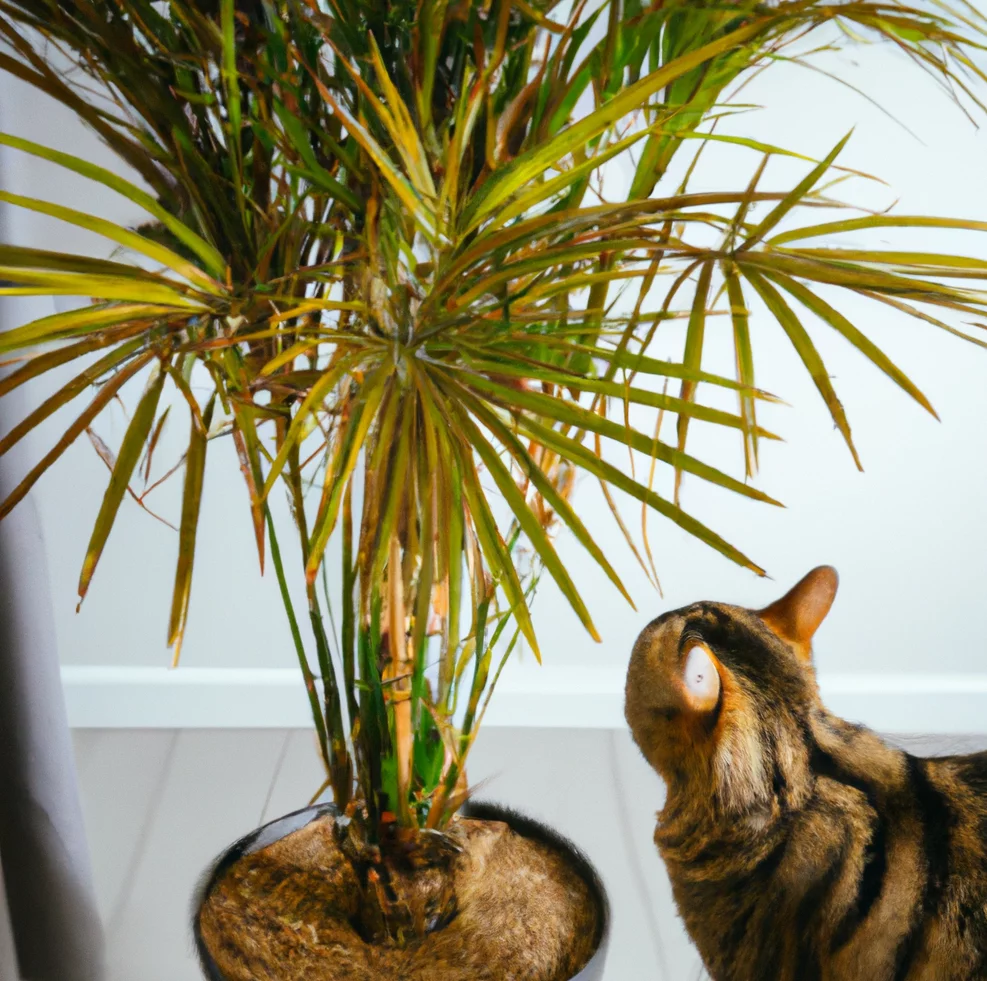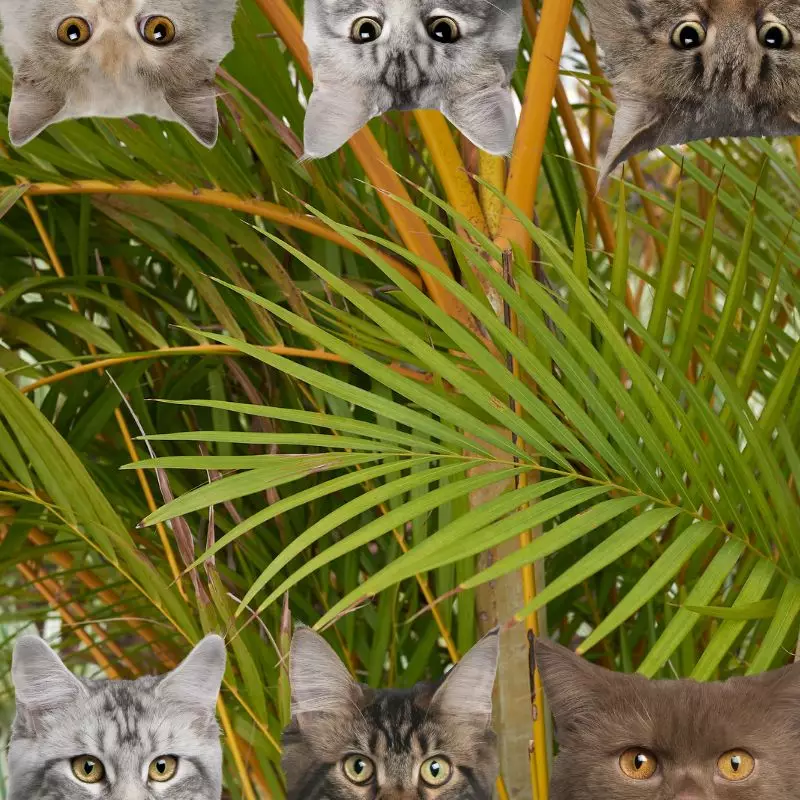Cane Palms are not toxic to cats, and thus pet owners can be assured of their feline friends’ safety around this plant.
This article is formulated with the expertise and contributions of a team of experienced Doctors of Veterinary Medicine (DVMs). Their valuable insights allow us to present precise and current information on the prospective risks connected to various plants, focusing on Cane Palms for this discussion, and their impacts on cats. Additionally, our findings are substantiated through meticulous research from high-authority websites like the ASPCA and PetMD, ensuring the reliability of every piece of information we present on plants.
Most varieties of palm are commercially available as houseplants and are recognized as non-toxic to animals. Not only are Cane Palms safe for cats, but they are also harmless for dogs and horses, providing peace of mind to pet owners who prefer a greener living space.
Can Cats Eat Cane Palm?

Cats are attracted to long narrow leaves like the ones of the cane palm. Your cat may be tempted to eat the leaves because they resemble grass and taste like grass. But no worries, it will cause no harm if your feline friend ate this plant.
As a reminder, plants are not a good source of nutrition for cats. Their bodies are not equipped to process such substances. They may experience stomach issues in eating a huge quantity of plants.
What is Cane Palm?

Cane palm with the scientific name Dypsis lutescens also known as areca palm, yellow palm, butterfly palm, or bamboo palm, is a flowering plant native to Madagascar. It has been naturalized in other regions such as the Andaman Islands, El Salvador, Cuba, Puerto Rico, the Canary Islands, southern Florida, Haiti, the Dominican Republic, Jamaica, the Leeward Islands, and the Leeward Antilles.
The cane palm belongs to the palm family Arecaceae. It is a sensitive, evergreen, multi-stemmed palm. It can reach a height of eight meters and produce huge, lance-shaped leaves with yellow-green leaflets that are up to two meters long. The leaves are frond-like and arching, growing on cane stems, and are grown primarily for the tropical seeming foliage.
It is grown as an ornamental plant in gardens in tropical and subtropical regions, it’s also a great houseplant and is frequently used as an office plant. In the summer, it may produce little yellow flowers.
Keeping Cats Away From Cane Palm

Most cats may ignore a cane palm outside, with the exception of clawing around the mulch or dirt beneath a cane palm. The most essential thing is to put enough mulch around an exterior tree to keep cats from digging near the roots.
Cane palms are safe for cats to use indoors, however, a young or energetic cat may scratch the dirt off the top. Because cane palms are an upright plant with a limited base, an excited cat can knock them down. It’s recommended to keep your plant pots in a room corner.
You may also place a layer of aluminum foil over your garden soil near your plants. Aluminum foils have crinkly textures and a distinct odor that cats dislike. This method will drive away your cats and will make them avoid getting near your plants.
Plants to Avoid For Your Cats
If you are a cat owner and unsure if the plants growing in your yard are harmful to your cats, check out this list of toxic plants for cats. You can also check our list of non-toxic plants for cats.





